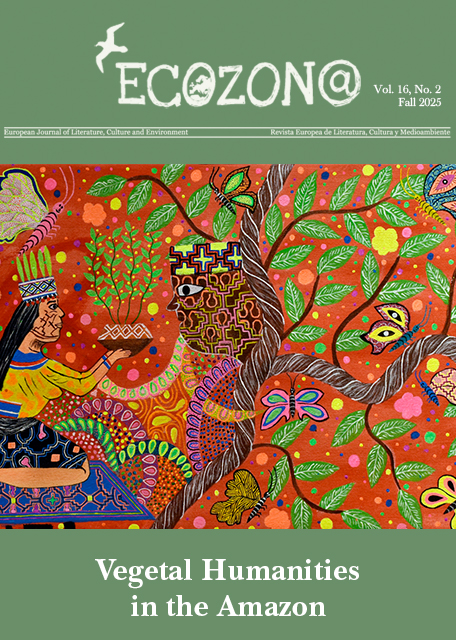<b>Being Homo Radix</b> // Ser Homo Radix
DOI:
https://doi.org/10.37536/ECOZONA.2015.6.1.649Schlagworte:
Woods, Roots, WritingAbstract
Losing oneself in the singing silence of old-growth forests and being reborn at the age of 30 as Homo Radix, Root Man: words can still change your life, offer a profound, formerly absent meaning. Tiziano Fratus encountered his first thousand-year-old sequoias in Big Sur, and from that point perceived the call of the voices of great trees. He began to cross landscapes in search of new fathers and new mothers. He plumbed the depths of Californian parks and the Italian, French, Swiss, and Austrian Alps; he immersed himself in the Mediterranean scrub. In botanical gardens, in the parks of historical homes, in cities and in the vast countryside, he met exotic old-growth trees that tell stories of other continents. He made his way to Singapore, Sweden, Spain, and returned to a height of 3000-3900 meters to observe the worn-out wood of the oldest conifers on the planet: more than 5000 years of living matter, again in California, in the White Mountains. He began to write books and to accompany people on journeys to meet the patriarchs of the planet. He became a faithful disciple of the verb “arborescere,” to make oneself a tree, coined by Pliny the Elder 2000 years ago.
Resumen
Perderse uno mismo en el silencio cantor de los bosques de árboles antiguos y renacer a la edad de 30 como Homo Radix, Hombre Raíz: las palabras aún pueden cambiar tu vida, ofrecer un profundo significado antes ausente. Tiziano Fratus encontró sus primeras secuoyas milenarias en Big Sur, y desde ese punto percibió la llamada de las voces de los grandes árboles. Empezó a cruzar paisajes en busca de nuevos padres y nuevas madres. Exploró las profundidades de los parques californianos y los Alpes italianos, franceses, suizos y austríacos; se sumergió en los arbustos mediterráneos. En los jardines botánicos, en los parques de hogares históricos, en las ciudades y en la amplia campiña, conoció exóticos árboles antiguos que cuentan historias de otros continentes. Viajó a Singapur, Suecia, España, y volvió a una altura de 3000-3900 metros para observar la exhausta madera de las coníferas más antiguas del planeta: más de 5000 años de materia orgánica, de nuevo en California, en las Montañas Blancas. Empezó a escribir libros y a acompañar a la gente en viajes para conocer a los patriarcas del planeta. Se convirtió en un fiel discípulo del verbo “arborescere”, hacerse árbol, acuñado por Plinio el Viejo hace 2000 años.
Downloads
Downloads
Veröffentlicht
Ausgabe
Rubrik
Lizenz
Authors who publish with this journal agree to the following terms:
a) Authors retain copyright and grant the journal right of first publication with the work simultaneously licensed under a Creative Commons Attribution License that allows others to share the work with an acknowledgement of the work's authorship and initial publication in this journal (CC BY-NC for articles and CC BY-NC-ND for creative work, unless author requests otherwise.
b) Authors are able to enter into separate, additional contractual arrangements for the non-exclusive distribution of the journal's published version of the work (e.g., post it to an institutional repository or publish it in a book), with an acknowledgement of its initial publication in this journal.
c) Authors are permitted and encouraged to post their work online (e.g., in institutional repositories or on their website) prior to and during the submission process, as it can lead to productive exchanges, as well as earlier and greater citation of published work (See The Effect of Open Access).










